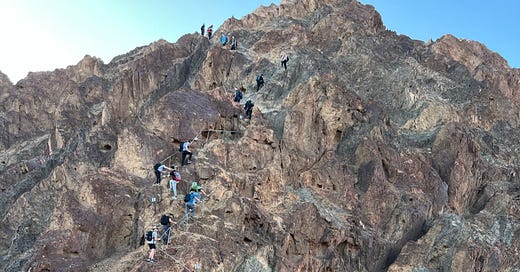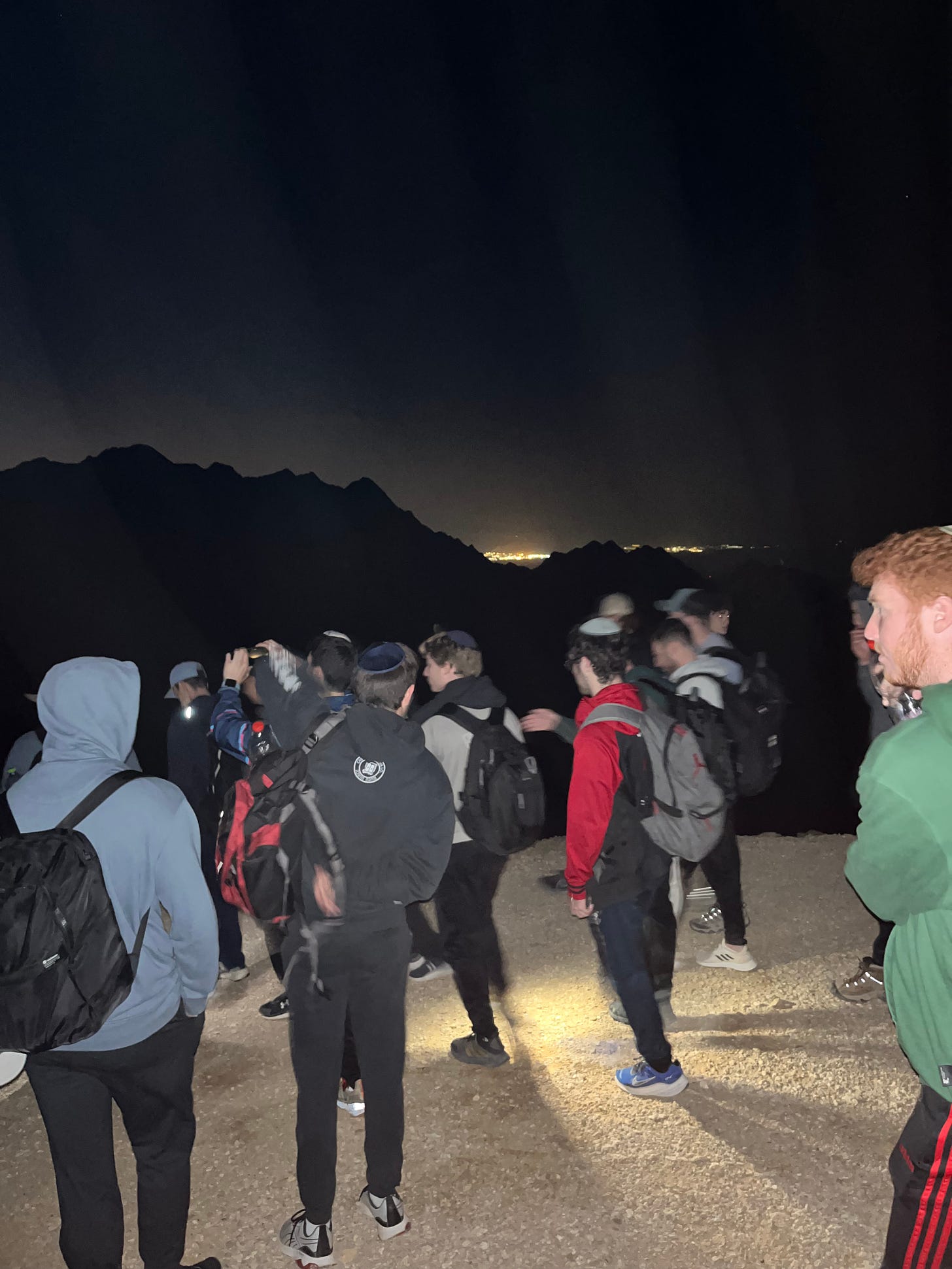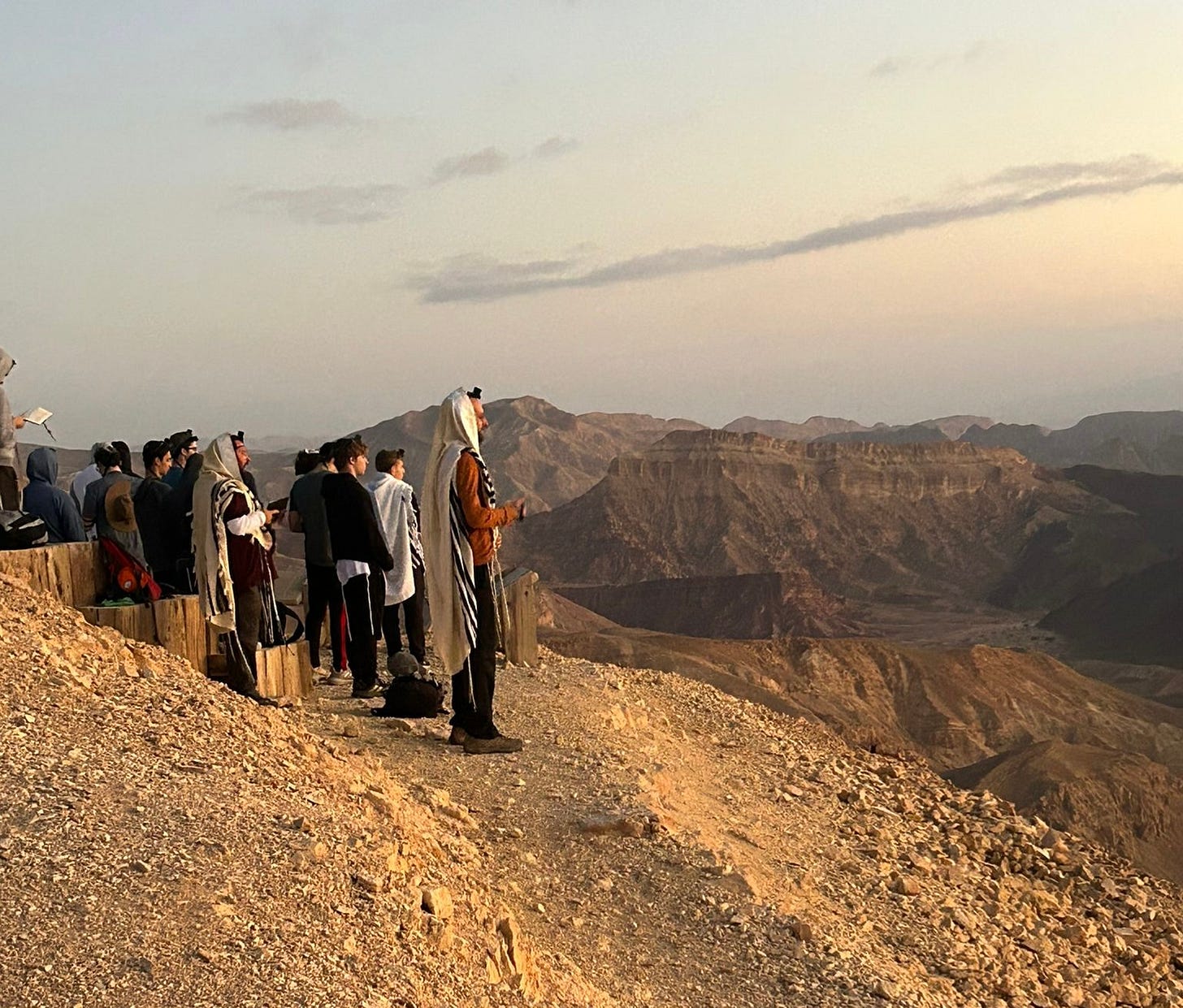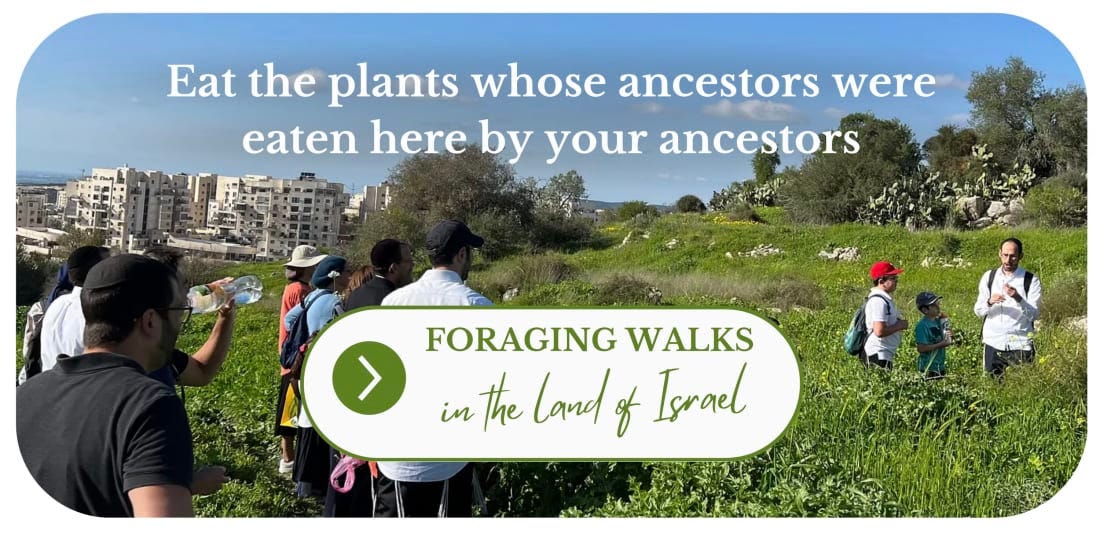Dear Healthy Jew,
At 4:30 AM, the bus left our group of Lev Hatorah gap-year guys at the foot of Har Shlomo (Mount Solomon), and we started climbing the steep trail.
The pre-dawn black was punctured by thousands of tiny starlights: this mountain near Eilat is far from Israel’s light-polluted center. We also had a few flashlights.
Somewhere near the top, we stopped to sing:
“I will praise God, with my searching heart, as the morning stars sing together.
Attend to the soul; [it is like] precious stones;
It’s light is like the sun, 70 times the light of the morning.”1
Then we prayed:
At breakfast on the ridge, I pulled out my bag of mixed unsalted raw nuts and doled out Healthy Jew Trail Mix to our climbers. I also pulled apart a Healthy Jew pomegranate for all the crew; we tossed the rinds over the cliff.
It’s good we brought along Real Food, because Har Shlomo is deep in the desert, and there wasn’t much to forage.
But there’s always something. It rains near here a few times a year, and the flooded wadis birth some hardy desert plants. Those desert plants, in turn, support desert animals, like these adorable little mountain goats we met near the end. Apparently they don’t see many humans, because they weren’t too scared of us when we crouched down to their height.
What’s the connection between this lonely desert mountain and King Shlomo?
You see, at the height of the united Jewish kingdom (9th century BCE), Shlomo established a trading outpost at the port city of Eilat on the Red Sea2 - just like the modern State of Israel has done today. (As you approach Eilat, the highway is lined with vast lots with tens of thousands of brand-new cars imported from Asia through the Red Sea.)
Apparently, Shlomo also mined the surrounding mountains for their rich mineral deposits - also like I hear that modern Israel does today. There’s a good chance that his minions were digging 2700 years ago on the trails that we walked.
But there’s a catch.
Eilat and its environs - including Har Shlomo - aren’t inside Natural Israel. Yup, not everywhere that Jews settled in the Middle East is part of the body of the Jewish people.
Next Sunday we’ll learn some Jewish geography. Stay tuned.
Thank you for reading Healthy Jew.
Here are 2 great paths to continue the journey:
Also check out this intro and index to explore hundreds of posts about our 3 Healthy Jew topics: Wellness with Wisdom, Land of Life (Israel), and Sensible Spirituality.
Finally, always feel free to reach out here with any comments, questions, or complaints:
I look forward to hearing from you!
Be well,
Rabbi Shmuel Chaim Naiman
Odeh La’el (found in many prayer books before the daily morning prayers).
Melachim I 9:26









